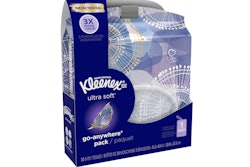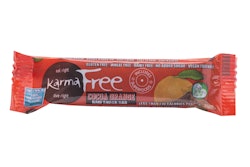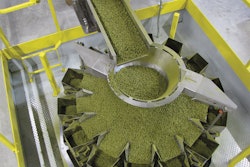Quad seal bags have two side gussets (like a grocery bag), but their differentiating feature──from which they derive their name──is that the gussets and the two panels are joined by four vertical seals.
When the bags are designed to have a rectangular bottom (again, like a grocery bag), they can stand erect. For large bags holding upwards of 10 lbs., the bottom is closed via a fold-under flap and the bagged product is displayed lying face-up, pillow-fashion. Regardless of their bottoms, quad seal bags permit graphics to be printed on the gussets as well as the front and back panels, thus the potential for impressive visual impact. As for the back panel, there is no middle seal to interrupt the graphics.
The bags are constructed of laminations, any particular construction dictated by the requirements of the product. A typical lamination is that of PET/aluminum/LLDPE, providing barrier to oxygen, UV light, and moisture. Quad bags, being lightweight, provide the sustainability benefits associated with that characteristic; additionally, there is source reduction, since the gussets expand, accordion-like, requiring less packaging for a given quantity of product.
Quad bags can be equipped with consumer convenience features, such as an easy-opening zipper, as well as a zip-lock, among other options. More of a convenience to the marketer, though, is that the bags can be equipped with degassing valves for coffee, a major application.
The bags can be ordered pre-made; however, at some threshold quantity, roll stock is the self-presenting choice. Vertical form/fill/seal machinery is what’s needed. Beyond mere designation, however, there are key considerations, including: speed (whether continuous or intermittent); footprint; energy efficiency; controls & diagnostics; and, oh yeah, cost & maintenance.
Quad seal bags, as can be inferred by the preceding descriptions, are constructions of some complexity, compared to, for example, the stand-up pouch, which has no gussets. It’s their complexity that makes quad seal bags subject to certain defects. One type of defect is a seal that is not continuous, but has gaps. Another type is a gusset that runs all the way to the top of the bag, instead of stopping below the horizontal seal area that binds the tops of the front and back panels. Another one is gussets that stick together, resisting, for example, suction cups designed to open the bag for filling.
It is the role of Quality Assurance (QA) to identify the causes of defects and to hold their occurrences to within industry-accepted rates, done by implementing the requisite controls, from incoming materials to finished goods. QA nomenclature categorizes defects as minor, major, and critical. A minor defect does not render the item unfit for its intended purposes. A major defect does render the item unfit for its intended purposes. A critical defect goes further and renders the item unsafe.
It is common industry practice for buyer and supplier, together, to decide what constitutes acceptable rates for defects. For quad seal bags, the industry norm is 1-3%. To lend perspective, a 0% rate would be unreasonable and unattainable, particularly in light of the volumes implicit in some business relationships, ranging in the millions of units.
From a different but related perspective, 100% manual inspection also would be unreasonable and unattainable. A production run would take multiples of the time and resources that it otherwise would; additionally, manual inspection, itself, might cause harm, if the handling is too rough, or the bags drop to the floor.
The aforementioned is why QA is statistically based, strategically collecting data throughout related processes. QA places emphasis on the early evidencing of issues rather than on afterthought inspection. A distinction between quality control and quality assurance is that the former seeks to inspect quality into the product, whereas the latter seeks to build quality into the product.
Although all defects are problems, not all problems are defects. Some problems can stem from activities outside the control of the bag manufacturer but be wrongly assigned to the manufacturing process. An example is damage inflicted at the filling plant, from improper material handling (especially by forklift) and improper storage. Another example residing at the filling plant is problematic filling due to improper calibrations and settings of equipment.
Without the proper root-cause analysis, the distinction between a defect and a problem can be a mistaken one, resulting in misapplied and ineffective corrective actions.
Quad seal bags might not be destined to match the diversity of applications enjoyed by the aforementioned stand-up pouch. But it’s a safe bet that the bags will expand their applications beyond coffee (for which it’s the dominant flexible package), dry pet food, and similar products of weight, and into different products, including some currently packaged in stand-up pouches.
The success of the bags, as a segment, will depend on the competitiveness of the member suppliers. Those that provide the best range of services, including graphics design & printing, choice of materials, machine compatibility, and after-the-sell consulting, will shepherd the segment forward. In other words, the future of quad seal bags will depend on providing marketers with performance and cost-effectiveness, sufficient to get them to wake-up and smell beyond the coffee.
Sterling Anthony, CPP, is a consultant specializing in packaging, marketing, logistics, and human-factors. His contact information: 100 Renaissance Center, Box-176, Detroit, MI 48243; telephone 313-531-1875; [email protected]; www.pkgconsultant.com






















